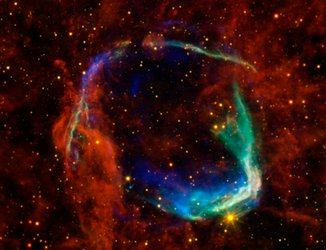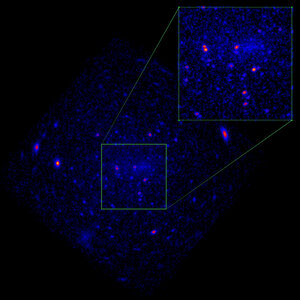Accept all cookies Accept only essential cookies See our Cookie Notice

About ESA
The European Space Agency (ESA) is Europe’s gateway to space. Its mission is to shape the development of Europe’s space capability and ensure that investment in space continues to deliver benefits to the citizens of Europe and the world.
Highlights
ESA - United space in Europe
This is ESA ESA facts Member States & Cooperating States Funding Director General Top management For Member State Delegations European vision European Space Policy ESA & EU Space Councils Responsibility & Sustainability Annual Report Calendar of meetings Corporate newsEstablishments & sites
ESA Headquarters ESA ESTEC ESA ESOC ESA ESRIN ESA EAC ESA ESAC Europe's Spaceport ESA ESEC ESA ECSAT Brussels Office Washington OfficeWorking with ESA
Business with ESA ESA Commercialisation Gateway Law at ESA Careers Cyber resilience at ESA IT at ESA Newsroom Partnerships Merchandising Licence Education Open Space Innovation Platform Integrity and Reporting Administrative Tribunal Health and SafetyMore about ESA
History ESA Historical Archives Exhibitions Publications Art & Culture ESA Merchandise Kids Diversity ESA Brand Centre ESA ChampionsSpace in Member States
Find out more about space activities in our 23 Member States, and understand how ESA works together with their national agencies, institutions and organisations.
Science & Exploration
Exploring our Solar System and unlocking the secrets of the Universe
Go to topicAstronauts
Missions
Juice Euclid Webb Solar Orbiter BepiColombo Gaia ExoMars Cheops Exoplanet missions More missionsActivities
International Space Station Orion service module Gateway Concordia Caves & Pangaea BenefitsSpace Safety
Protecting life and infrastructure on Earth and in orbit
Go to topicAsteroids
Asteroids and Planetary Defence Asteroid danger explained Flyeye telescope: asteroid detection Hera mission: asteroid deflection Near-Earth Object Coordination CentreSpace junk
About space debris Space debris by the numbers Space Environment Report In space refuelling, refurbishing and removingSafety from space
Clean Space ecodesign Zero Debris Technologies Space for Earth Supporting Sustainable DevelopmentLatest
Applications
Using space to benefit citizens and meet future challenges on Earth
Go to topicObserving the Earth
Observing the Earth Future EO Copernicus Meteorology Space for our climate Satellite missionsCommercialisation
ESA Commercialisation Gateway Open Space Innovation Platform Business Incubation ESA Space SolutionsLatest
Enabling & Support
Making space accessible and developing the technologies for the future
Go to topicBuilding missions
Space Engineering and Technology Test centre Laboratories Concurrent Design Facility Preparing for the future Shaping the Future Discovery and Preparation Advanced Concepts TeamSpace transportation
Space Transportation Ariane Vega Space Rider Future space transportation Boost! Europe's Spaceport Launches from Europe's Spaceport from 2012Latest

XMM-Newton's X-ray images of Alpha Centauri
Thank you for liking
You have already liked this page, you can only like it once!
Two XMM EPIC MOS images of Alpha Centauri A+B, taken in March 2003 (left) and Feb. 2005 (right). Alpha Centauri is our nearest stellar system consisting of a G2V (A) and a K1V (B) star at a distance of about four light-years, the M dwarf star Proxima Centauri is not in the field of view. Alpha Cen B is the X-ray brighter object at lower right and exhibits a comparable X-ray luminosity in both exposures. In contrast Alpha Cen A, a star very similar to our Sun, is only visible in the left image. It has faded in X-rays by at least an order of magnitude, a behaviour never observed before despite several observations of the Alpha Centauri system over the last 25 years. Is this an irregular event or do we see a coronal activity cycle?
Our Sun, a relatively inactive star, exhibits a well-known activity cycle with a period of 11 years. While chromospheric activity cycles on low-activity stars are established from optical measurements of Ca II emission lines, coronal X-ray activity cycles are known for very few objects. A long-term XMM-Newton monitoring programme of solar-like stars, including Alpha Centauri A+B, was initiated to put some more light on this topic. No activity cycle was ever detected on a component of Alpha Centauri. Since also no chromospheric data of Alpha Centauri is available and all previous resolved X-ray observations (Einstein, ROSAT, Chandra) revealed a similar situation as this March 2003 XMM-Newton observation, a definite explanation of this astonishing finding can only be given by future observations.
-
CREDIT
ESA/Jan Robrade -
LICENCE
ESA Standard Licence

Multicoloured view of supernova remnant

Proxima Centauri, our nearest neighbour

Globular cluster Omega Centauri imaged by Einstein Probe

X-raying a galaxy’s stellar remnants















 Germany
Germany
 Austria
Austria
 Belgium
Belgium
 Denmark
Denmark
 Spain
Spain
 Estonia
Estonia
 Finland
Finland
 France
France
 Greece
Greece
 Hungary
Hungary
 Ireland
Ireland
 Italy
Italy
 Luxembourg
Luxembourg
 Norway
Norway
 The Netherlands
The Netherlands
 Poland
Poland
 Portugal
Portugal
 Czechia
Czechia
 Romania
Romania
 United Kingdom
United Kingdom
 Slovenia
Slovenia
 Sweden
Sweden
 Switzerland
Switzerland
























